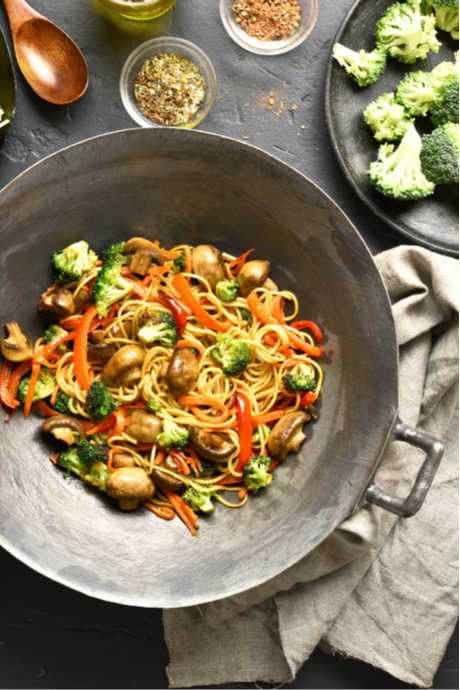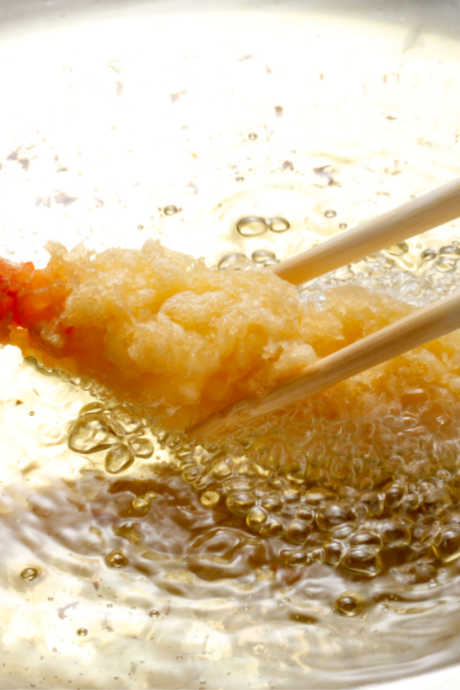What to Cook in a Wok
Posted by Julie on Jan 15th 2020
Because we offer such a wide range of cookware, it’s important to us to help our readers and customers understand all the options. We’ve covered the differences between cookware materials such as stainless steel, cast iron, nonstick, and copper. We’ve also explained why you might consider buying a saute pan, a saucier, and a Dutch oven.
Now we’re looking at woks. What makes a wok different from other cookware? How can you use it to recreate take-out stir-fry at home? What else can you do with a wok that would make it a worthwhile purchase? Keep reading for the answers to all of these questions.
What Makes a Wok Different?
The best way to start explaining what makes a wok different from other pans is to show pictures that clearly illustrate the difference in appearance.

The bottom of a wok has a significantly smaller diameter than the opening. The sides of a wok are sloped, and it’s deeper than both a skillet and a saute pan. Unlike a saucier, which has curved sides to facilitate stirring, a wok has straight, steep sides for tossing and flipping ingredients. The sides heat up along with the base, which means they’re an effective cooking surface, in addition to helping contain those ingredients.
Woks used in restaurant kitchens are frequently made from carbon steel. However, we offer woks made from a variety of materials, including stainless steel, cast iron, and nonstick. A cast iron wok is heavier than carbon steel, but the cooking surface behaves similarly. Season it regularly, and it will acquire naturally nonstick properties and impart even more flavor to the food you’re cooking.
Stir-Frying in a Wok
Home stovetops are not able to generate the same heat as the burners in a restaurant kitchen, though gas will perform better than electric. You can turn a gas flame up and down quickly; an electric burner isn’t as responsive. But even if you have an electric stove, we have some tips for achieving the best stir-fry results possible.
First, start by prepping everything in advance. Cooking with a wok is done quickly at high heat. There’s no time to slice or chop, or even step away from your wok. Cut all vegetables into similar-sized pieces so they will cook evenly. Pat vegetables dry: Excess surface moisture will cause them to steam and soften, and you want them to sear and stay crisp. Cut meat into bite-sized pieces and coat it with sauce. It doesn’t have to marinate in sauce for hours; even just a few minutes will do.

Next, heat up the wok without any oil in it. If you have a cast iron or carbon steel wok, the seasoning may start to smoke. You’ll know the pan is hot enough to add oil when a drop of water sizzles and evaporates. Add oil with a high smoke point, like peanut oil, vegetable oil, or canola oil.
Consider cooking your ingredients separately to account for different cooking times. You don’t want your vegetables to get soggy or your meat to dry out. Also, cook small portions of ingredients at once. If you add too much food to any pan, the temperature of the pan will drop. The food will take longer to cook, and it will braise or steam, not fry.
Finally, keep those ingredients moving. If you’re not confident you can execute a perfect pan-flip, use the handle to move the wok side to side and back and forth. Flip and toss the ingredients with a spatula or spoon until they are cooked evenly.
Other Ways to Use a Wok
Say you don’t make stir-fry more often than once a month. Do you really need a wok? Consider other ways to use this type of pan that might come in handy more often than you’d think.
A wok is excellent for steaming, whether you use a bamboo steamer or a metal steamer insert. Use it to steam dumplings, vegetables, or fish. One advantage to a metal steamer insert is that it can expand to take advantage of the larger diameter at the top of a wok. This gives you greater surface area for steaming.

A wok is also a smart choice for deep frying. Serious Eats and Food Network disagree on whether a wok requires more oil for deep frying than a Dutch oven. We agree with Food Network that a wok is better suited to deep frying smaller items like tempura, rather than large pieces of chicken or fish. Either way, the sloped sides of a wok help keep oil from spattering, and it’s easier to pour from a wok than a Dutch oven.
One unexpected use for a wok is making scrambled eggs. Toss those eggs and keep them moving, and then use a spatula to ensure you’ve thoroughly cooked them. You can also use a wok to pop popcorn on the stove; just cover the opening with a lid. Then use the sloped sides to help evenly distribute seasoning to every piece of popcorn.
Have we convinced you that you might use a wok more often than you’d think? Check out our full selection of woks and stir-fry pans from brands like Le Creuset, All-Clad, and Scanpan.
 Free shipping over $49
Free shipping over $49










